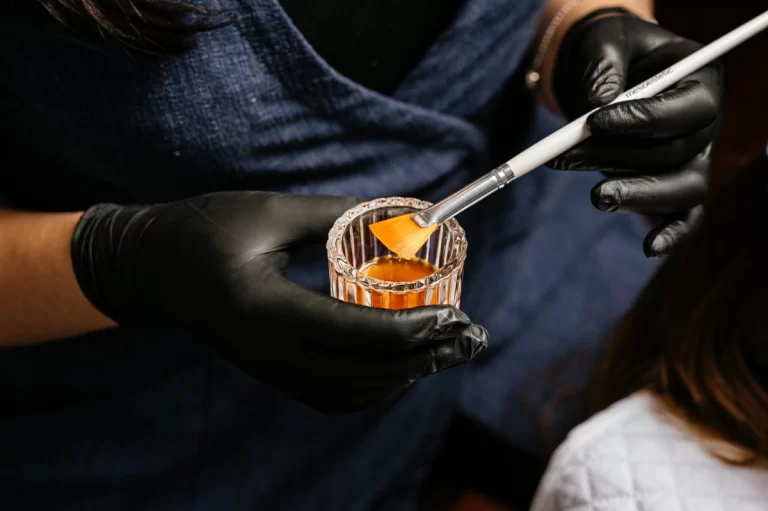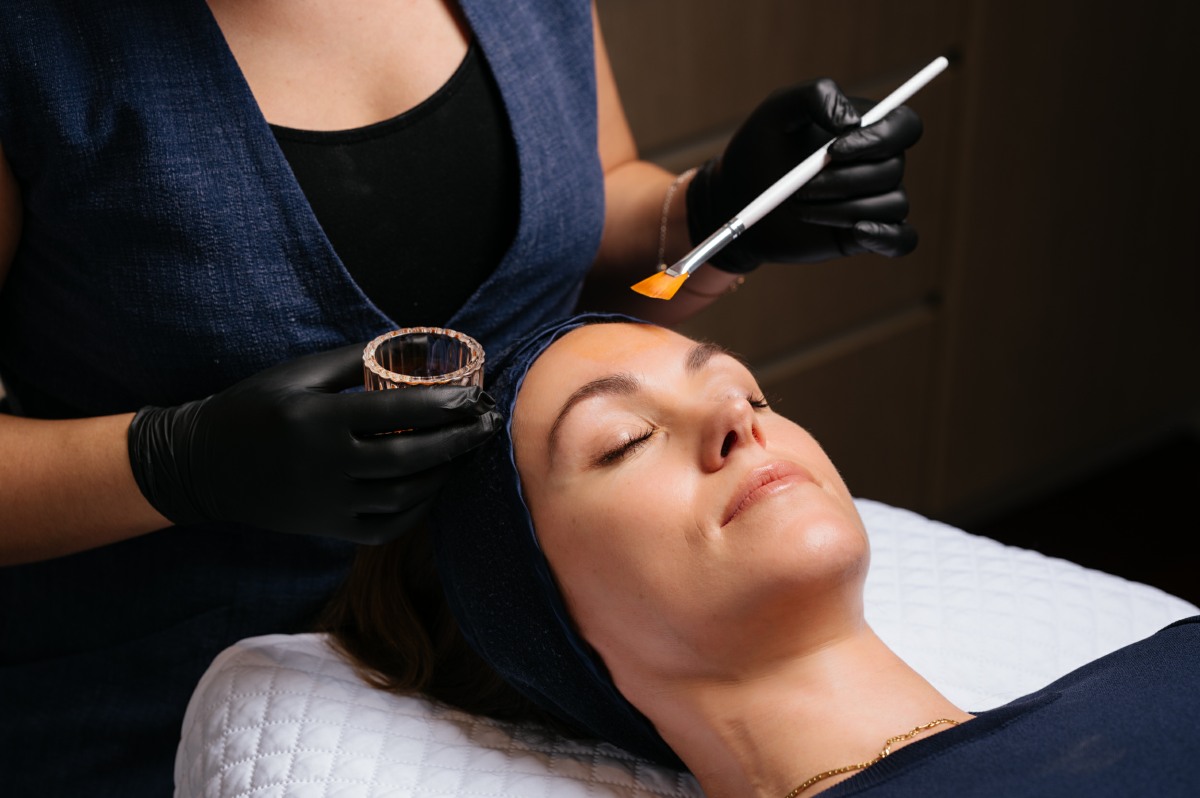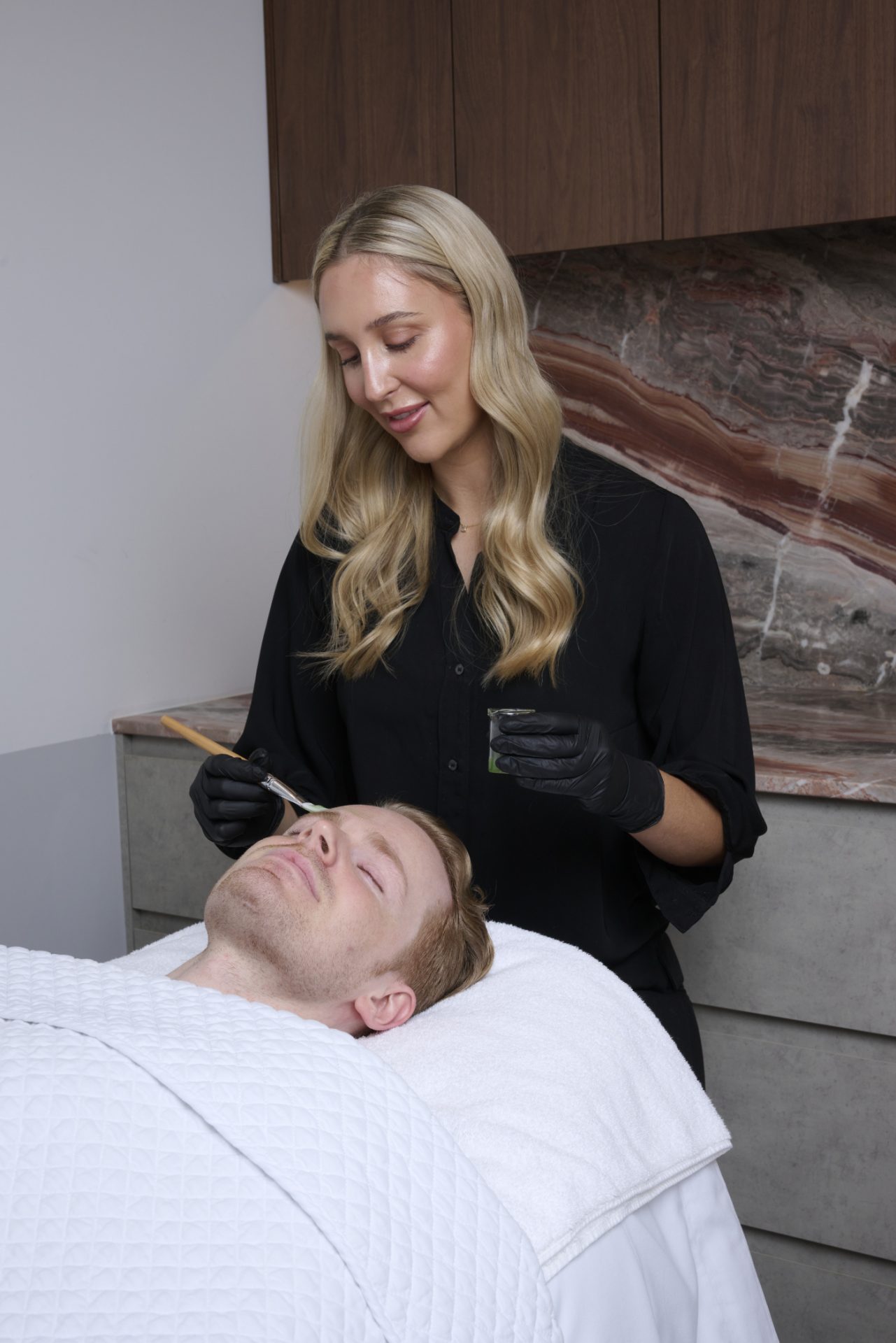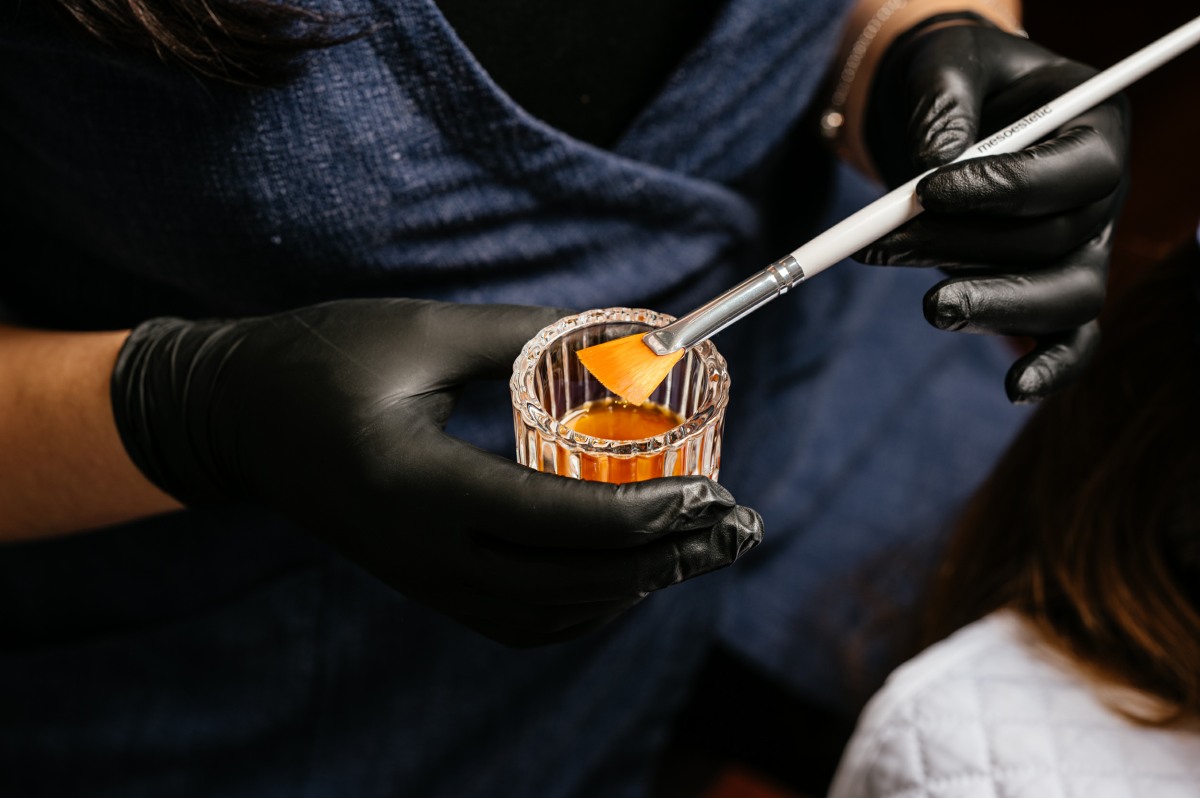Common Misconceptions About Clinical Peels

Debunking myths about peels with Dermal Therapist Faith.
“I’m not sure what I want… but I don’t want anything where my skin peels off!” This is something I hear many of my clients say when we are discussing treatment options.
Although chemical peels have gained immense popularity in the realm of skincare over the years, they are often surrounded by misconceptions and myths. Some of these are that all chemical peels result in significant downtime, they are intensely painful, and that they are expensive.
Well, it would give me great satisfaction to debunk these misconceptions for you! My goal is that my clients understand the remarkable ability clinical peels have to rejuvenate the skin and how they can be tailored to suit any dermal concern.

Misconception #1: All Chemical Peels Require Prolonged Downtime
One of the most persistent misconceptions about chemical peels is that they inevitably lead to significant downtime. While it’s true that some chemical peels, such as deep phenol peels, can require several weeks of recovery, not all peels fall into this category. The extent of downtime largely depends on the type and strength of the peel used.
TCA (Trichloroacetic Acid) peels are a prime example of a chemical peel that offers effective results with a more manageable downtime. TCA peels are available in various strengths, which can be customised to suit individual skin types and concerns. Light to medium-strength TCA peels generally result in minimal downtime, typically lasting 3-7 days, during which the skin may appear red and flaky. The TCA peel is a personal favourite of mine.
At Youth Lab, we also offer light antioxidant peels which necessitate no downtime and are mild enough to undertake while pregnant. Follow up your peel with a soothing Healite LED II treatment for a healthy glow.

Misconception #2: Chemical Peels Are Painful
Another common misconception is that chemical peels are painful procedures. While some discomfort or stinging sensation can be expected during the peel application, it’s usually manageable and brief. The intensity of the sensation depends on the type and strength of the peel being used. Your practitioner can also use different techniques to help manage discomfort. One of these being a device that utilises cold air to cool the skin.
There are also some peels that are much lighter in strength that can be used as a gentle exfoliation, these types of peels only generate a slight “stingling” sensation. Peels like these are a great pre-event option.
Misconception #3: Chemical Peels Are a One-Size-Fits-All Solution
There is a widespread belief that chemical peels are a one-size-fits-all solution for various skin concerns. In reality, chemical peels are highly customisable. The strength of the peel, the number of applications, and the specific combination of ingredients are tailored to individual skin types and concerns. Whether you’re looking to treat acne scars, hyperpigmentation, or fine lines, your practitioner can recommend the right chemical peel and formulate it according to your unique needs.

Misconception #4: Chemical Peels Are Only for Severe Skin Issues
While chemical peels are effective at addressing severe skin issues, they are not exclusively reserved for such cases. Chemical peels, especially TCA peels, are versatile and can be used to improve skin texture, tone, and overall appearance. They are also an excellent choice for individuals who want to maintain healthy, radiant skin and prevent common signs of aging.
For example, if I have an event on, I will often do a really light entry level peel a few hours before. This will give my skin a great brighten up before I go out!
Misconception #5: Chemical Peels Are Not Safe for All Skin Types
Some people mistakenly believe that chemical peels are not suitable for all skin types. This can be true for the really intense peels such as Jessner, TCA or Phenol peels. With advancements in skincare, chemical peels can be adapted to safely accommodate a wide range of skin tones and textures. It’s essential to consult with a qualified skincare professional who can determine the most appropriate peel for your skin type and customise it accordingly.
Chemical peels are versatile and effective tools in any Dermal Therapist’s arsenal. By dispelling these common misconceptions, I hope to encourage my clients to explore the benefits of chemical peels without fearing excessive downtime or discomfort.
Your Youth Lab practitioner will always thoroughly consult with you to ensure your chemical peel is tailored to your unique needs. That way we can achieve the best possible results for your skin. Remember that with the right care and guidance, chemical peels can help you achieve a brighter, more youthful complexion without the need for extended downtime.

What chemical peel is best for acne?
The best chemical peel for acne can vary depending on your skin type. I would usually opt for something that contains either salicylic acid, glycolic acid or mandelic acid as these types of BHA’s and AHA’s are the best for breaking down oils in the skin (which is what results in pimples and pustules). An example of a peel containing these ingredients would be a Jessner Peel. If your skin is more sensitive then a Mandelic Acid Peel would be best as mandelic acid works similarly to Salicylic Acid but it is not as irritating to the skin.
What can cause complications with chemical peels?
Complications with chemical peels are rare but if they are to happen, they can be caused by a variety of factors. These include inadequate aftercare, exposure to the sun without protection, undisclosed use of certain skincare actives prior to the peel, and the peel’s depth or strength not being suitable for an individual’s skin type. Adhering to post-peel guidelines and providing your practitioner with accurate information about your skincare history is crucial to prevent complications and achieve the desired results safely.
Are chemical peel results permanent?
Although chemical peels are an amazing treatment and their results are are excellent the results usually last a number of months. Chemical peel results are not typically permanent, while they can lead to significant improvements in skin texture, tone, and issues like acne scarring or hyperpigmentation, the effects can be temporary if aftercare is not followed. Factors such as aging, sun exposure, and ongoing skincare routines can impact how long the results last. Most people require periodic maintenance peels to sustain the benefits over time. Your skincare professional can provide guidance on the best approach to maintain and maximise the results.
How do chemical peels actually work?
Chemical peels work by applying a chemical solution to the skin’s surface, causing controlled exfoliation. This exfoliation not only removes dead skin cells but also can break down oils and sebum on the skin’s surface. Acids like glycolic acid and salicylic acid, commonly used in peels, have the ability to dissolve oils and unclog pores. This helps in the treatment of acne and can lead to a clearer complexion. The peeling process further stimulates collagen production and skin renewal, resulting in improved texture and a more youthful appearance.
When would you choose a chemical peel over something like skin needling?
The choice between a chemical peel and other dermal treatments like skin needling depends on your specific skin concerns and goals. Chemical peels are ideal for addressing issues on the skin’s surface, such as sun damage, fine lines, and hyperpigmentation, as they provide a controlled exfoliation. Skin needling, is better suited for stimulating collagen production and treating deeper skin concerns like scars and wrinkles. The decision hinges on whether your primary concern is surface-level or extends deeper into the skin.
Book your next Youth Lab experience with Dermal Therapist Faith here.



